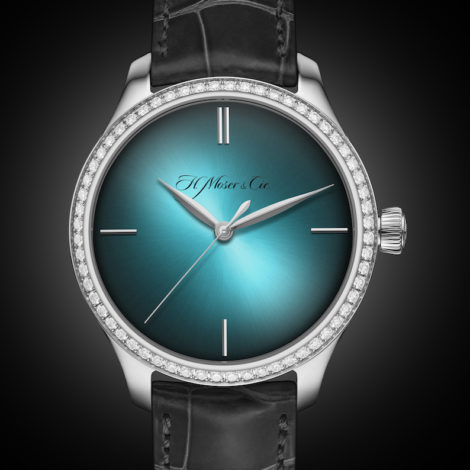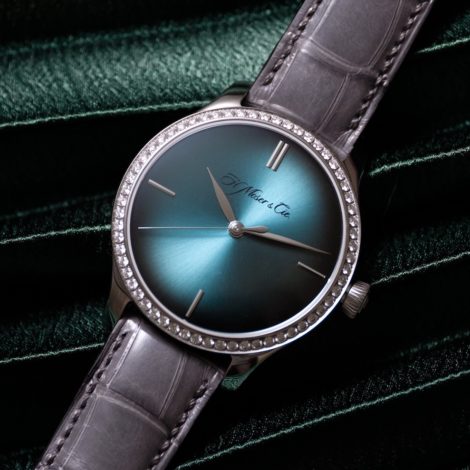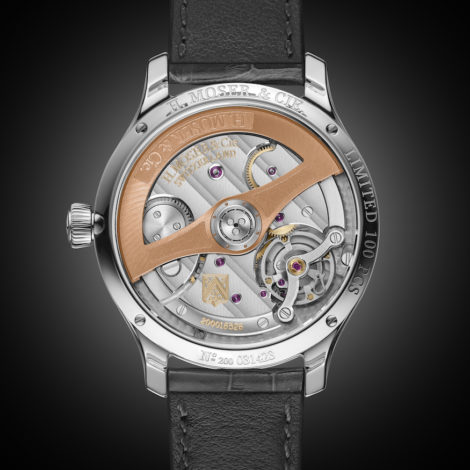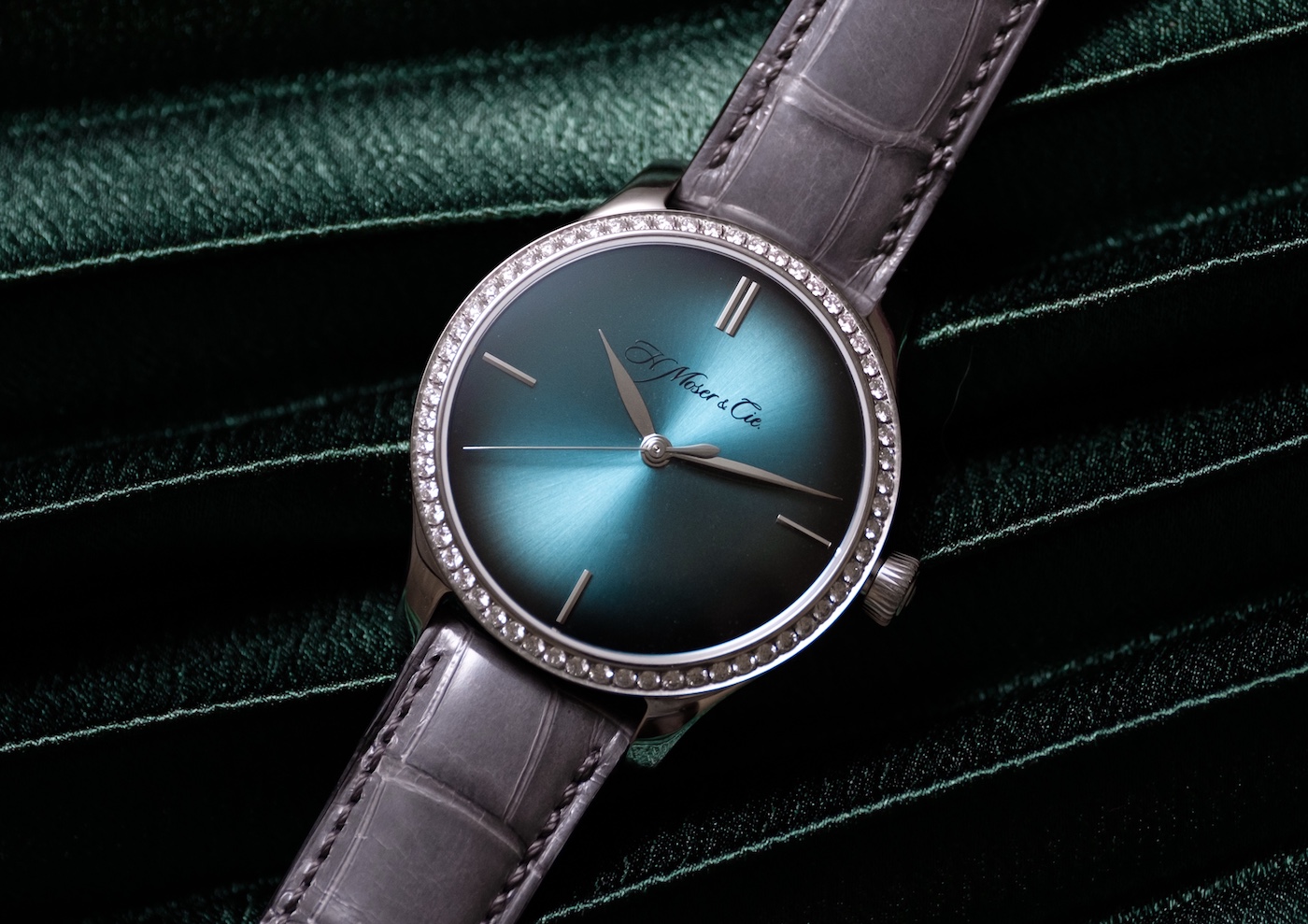
The H. Moser & Cie. Endeavour Centre Seconds Diamonds Purity is not only a paragon of simplicity, it is simply a great women’s watch. And yet, H. Moser is careful not to identify it as such. The press release describes it as a watch in “diamonds and steel in a compact case.” More specifically, the Endeavour Centre Seconds Diamonds Purity is a watch with a 38 mm steel case with a dial that is extremely minimalist in the H. Moser style, with four indices, including a double stroke at 12 o’clock and elegant leaf-shaped hands on a gradient blue fumé dial — with a lighter tone at the center that intensifies toward the outer dial. The strap is hand-stitched gray alligator with a steel-pin buckle.
This description is essentially the same as the men’s version of this watch, the Endeavor Centre Seconds Automatic, and that is what makes it a great women’s watch. The Endeavor Centre Seconds is also a three-hand watch with a fumé dial, elegant leaf-shaped hands, and an alligator strap with a pin buckle. There are only slight differences between it and the Diamonds Purity version: a bezel set with diamonds, four markers instead of 12, and a smaller case of 38 mm x 10.3 mm versus 40 mm x 10.7 mm. The two watches even have the same movement, the in-house automatic caliber HMC 200, finished in the same way and visible through the caseback.
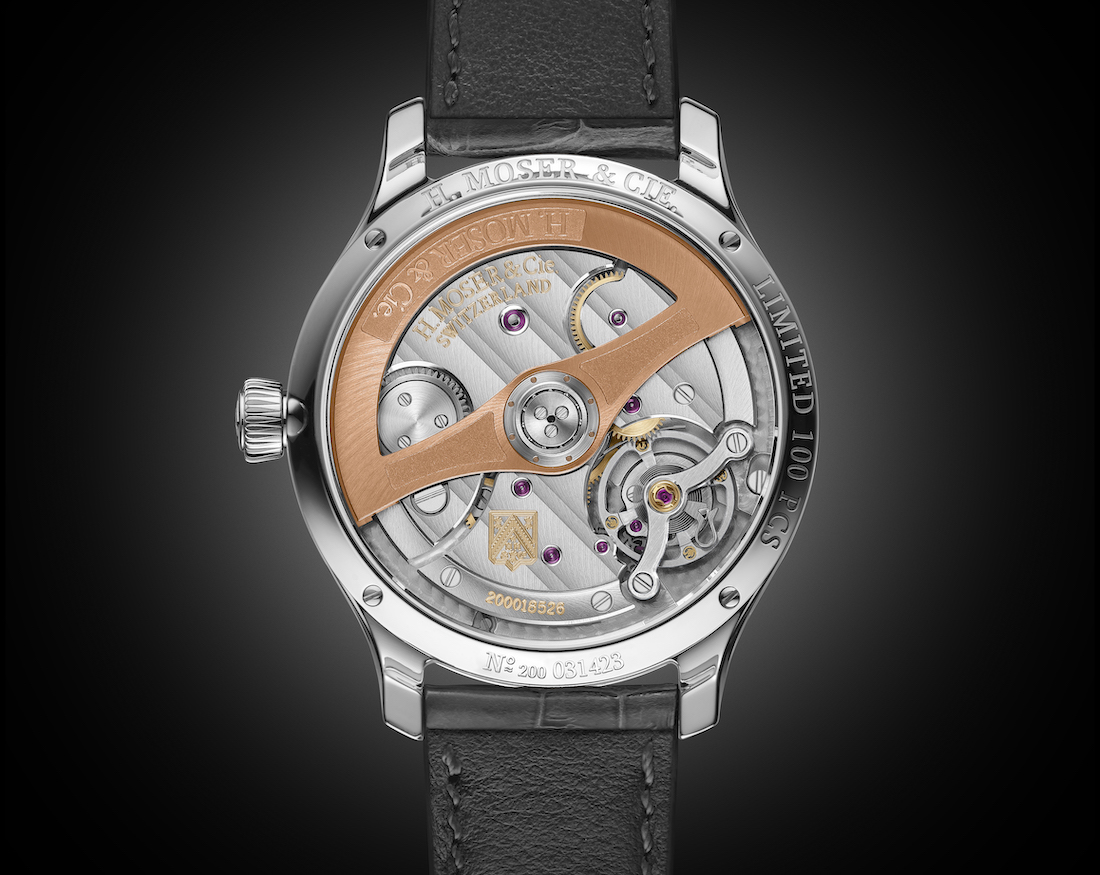
Understanding Femininity in Design
Only 10 years ago, this very idea would have insulted people who write about or sell watches. Back then, the prevailing view was that a women’s watch should NOT just be a smaller version of a man’s watch. We (I include myself among those who complained back then) wanted watch companies to make dedicated collections for women. The watch industry responded by designing watches that were hyper-feminine, decorated with flowers, butterflies, fairies, and any number of other decorative, colorful elements.
They were overstated rather than understated, and it was all a big mistake — a misreading of women’s tastes. Perhaps it was designed to teach us a lesson. If so, it worked. I, for one, have retreated to the smaller-version theory, which works better now that men’s watches have more substance.
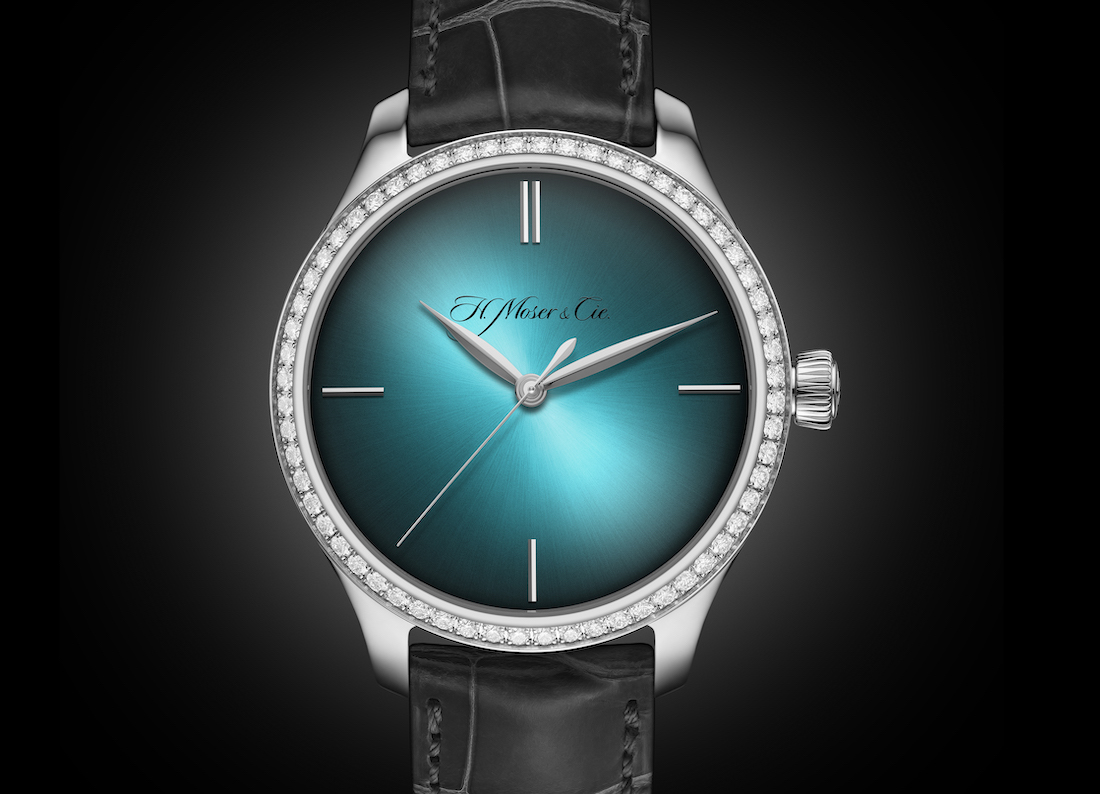
Unisex Watches Are On the Rise
The past two decades have been an incredibly creative era in watch design and engineering, and men’s watches have traditionally been the showcase for many new wonderful developments in watchmaking.
There have been so many times over the past few years when I have looked wistfully at a great men’s watch design with a state-of-the-art movement and wished it were just a touch smaller so women could be a part of the new age of watchmaking. And now, that is starting to happen, and the Endeavour Centre Seconds Diamonds Purity is a great example. So, why doesn’t the brand just proclaim it as a women’s watch, rather than describing it as a watch with “diamonds and steel in a compact case?”
My guess is because it could easily be worn by a man, and H. Moser does not want to discourage that. Men’s watches designed in the 1950s and ’60s, which some refer to as the golden age of watch design, were generally about 38 mm, or even smaller. It is also worth noting that adding diamonds does not necessarily feminize a watch anymore. Unisex watches are an emerging category of high watchmaking that is growing, and it is a great development that I hope we’ll see more of. So, call it what you will: dress watch, men’s watch, women’s watch, diamond watch — it’s all the same. A great watch is a great watch. It is priced at $15,900. Learn more at h-moser.com

